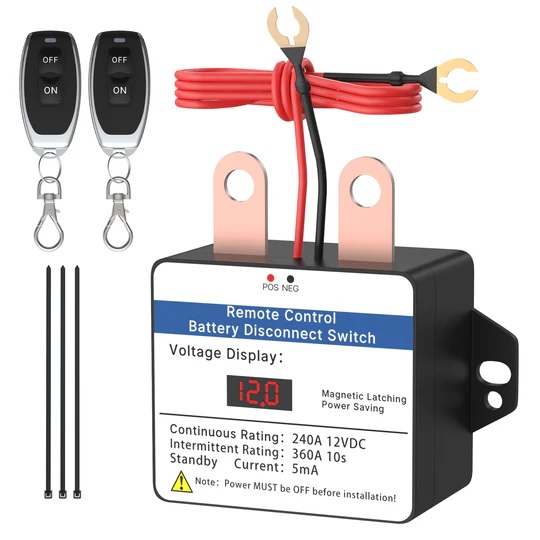A battery switch is a critical component for managing power in vehicles, boats, RVs, and other applications requiring battery-operated systems. This seemingly simple device plays a vital role in enhancing battery efficiency, ensuring safety, and extending the lifespan of electrical systems. In this article, we explore the functions, benefits, and considerations when choosing the right battery switch.
What Is a Battery Switch?
A battery switch is a device used to control the flow of electrical power between a battery and the connected circuits or devices. It allows users to easily disconnect or reconnect the battery without physically removing it. Depending on the design, it may also manage multiple batteries in complex systems.
Battery switches are commonly found in:
Automotive applications: Ensuring that batteries do not drain unnecessarily when the vehicle is parked.
Marine vessels: Isolating batteries during periods of inactivity to prevent power loss.
RVs and campers: Managing power flow for auxiliary systems like refrigerators and lighting.
Key Functions of a Battery Switch
Power Isolation: Battery switches are primarily used to isolate the battery from the electrical system when not in use. This prevents unnecessary power drain and protects the battery during extended periods of inactivity.
Multiple Battery Management: In systems with multiple batteries, such as boats, battery switches help manage power between the main and auxiliary batteries, allowing seamless switching or simultaneous use.
Safety and Maintenance: During maintenance or emergencies, a battery switch enables quick disconnection of the power supply, minimizing the risk of electrical shock or short circuits.
Benefits of Using a Battery Switch
Extended Battery Life: By isolating the battery when not in use, a battery switch minimizes energy loss and prolongs the battery’s lifespan.
Enhanced Safety: It prevents accidental electrical fires and makes routine maintenance safer and more efficient.
Convenience: Switching batteries on or off with a single turn of a knob saves time and effort, especially in systems with multiple power sources.
Prevention of Battery Drain: In vehicles or boats, leaving systems like lights or electronics on unintentionally can quickly deplete the battery. A battery switch eliminates this risk.
Choosing the Right Battery Switch
When selecting a battery switch, consider the following factors:
Voltage Compatibility: Ensure the switch is compatible with the voltage of your battery system (e.g., 12V, 24V).
Amperage Rating: The switch should support the maximum current your system requires. Overloading the switch can lead to overheating or failure.
Number of Batteries: For systems with multiple batteries, choose a switch designed for dual-battery management.
Durability: Look for switches made of corrosion-resistant materials, especially for marine or outdoor use.
Ease of Installation: Opt for a switch that fits easily into your existing setup without the need for extensive modifications.
Conclusion
A battery switch is a small yet indispensable device that provides efficient power management and safety in various applications. Whether you’re safeguarding your vehicle battery, managing power on a boat, or ensuring uninterrupted power in your RV, the right battery switch can make all the difference. By selecting a high-quality switch tailored to your needs, you can maximize convenience, enhance safety, and prolong the life of your battery systems. If you have questions about our product, please feel free to contact us.





